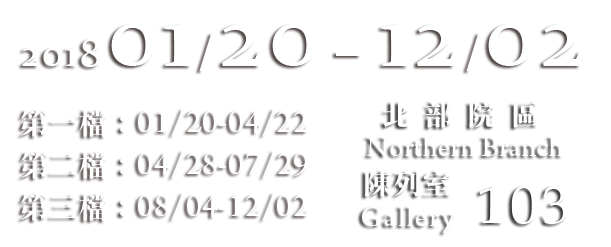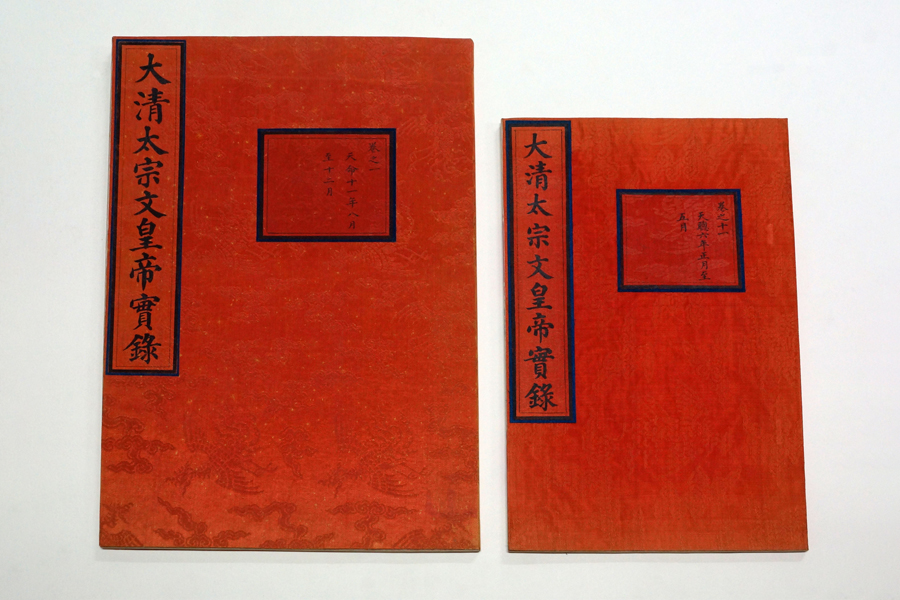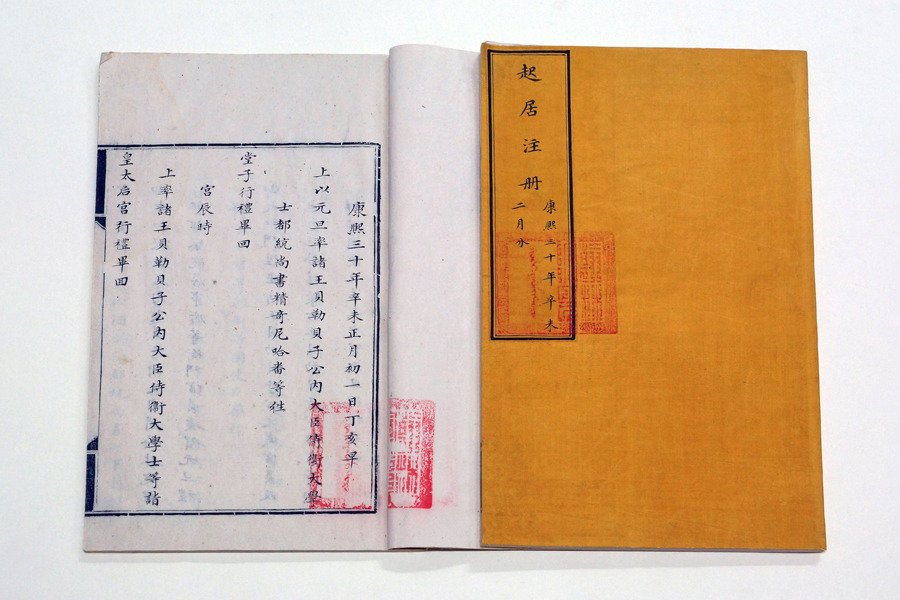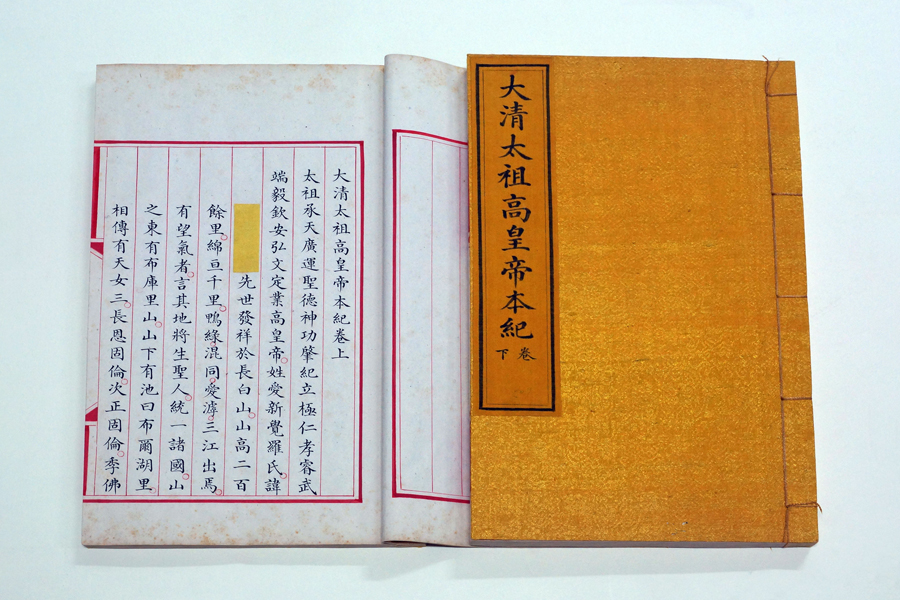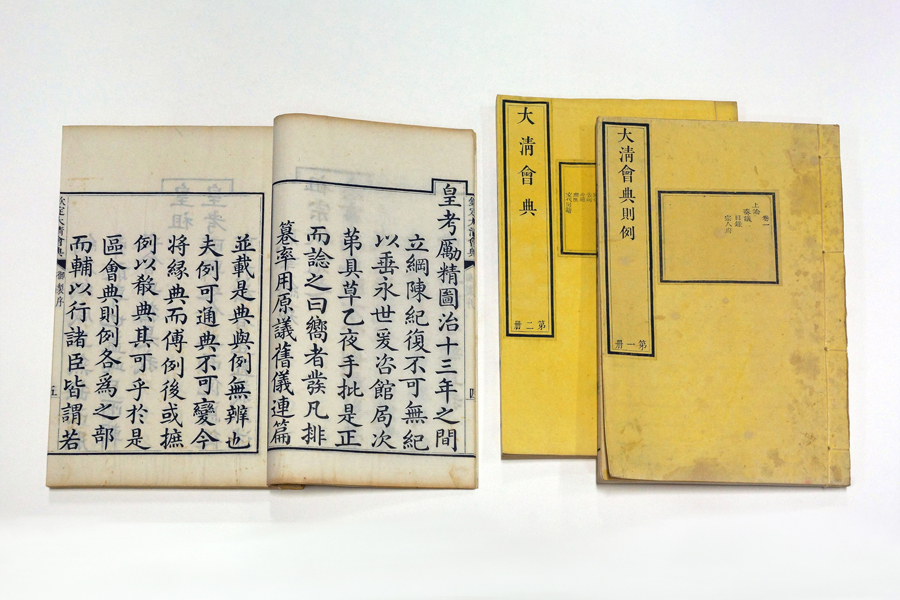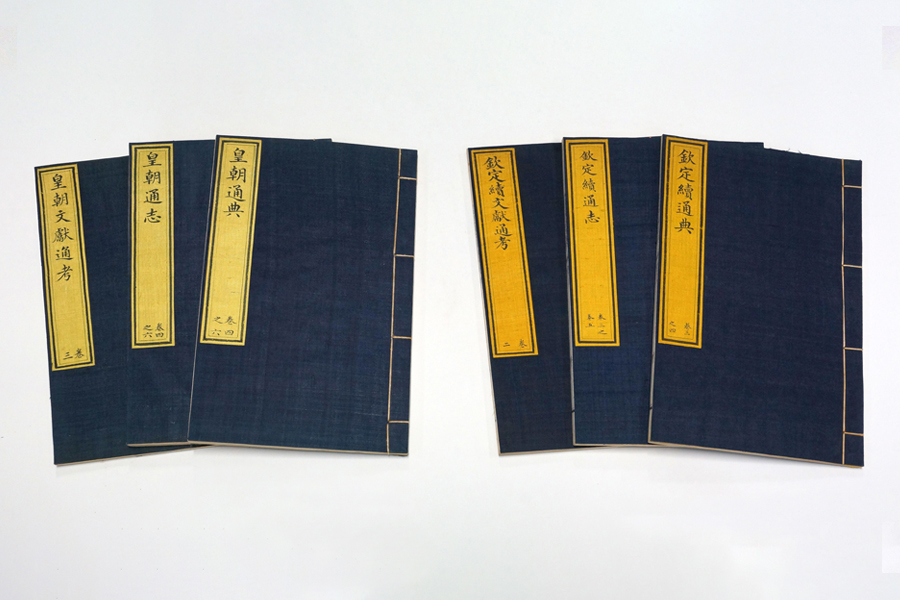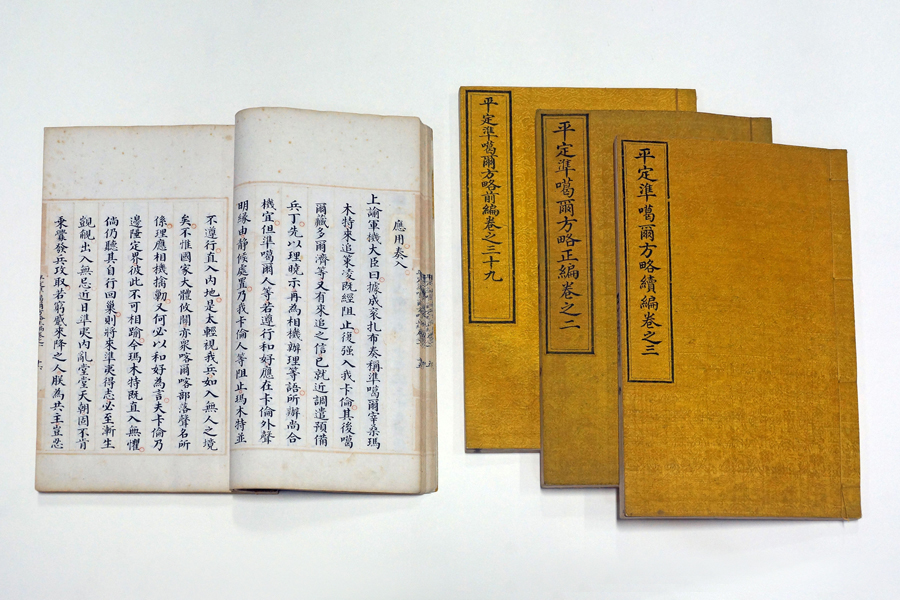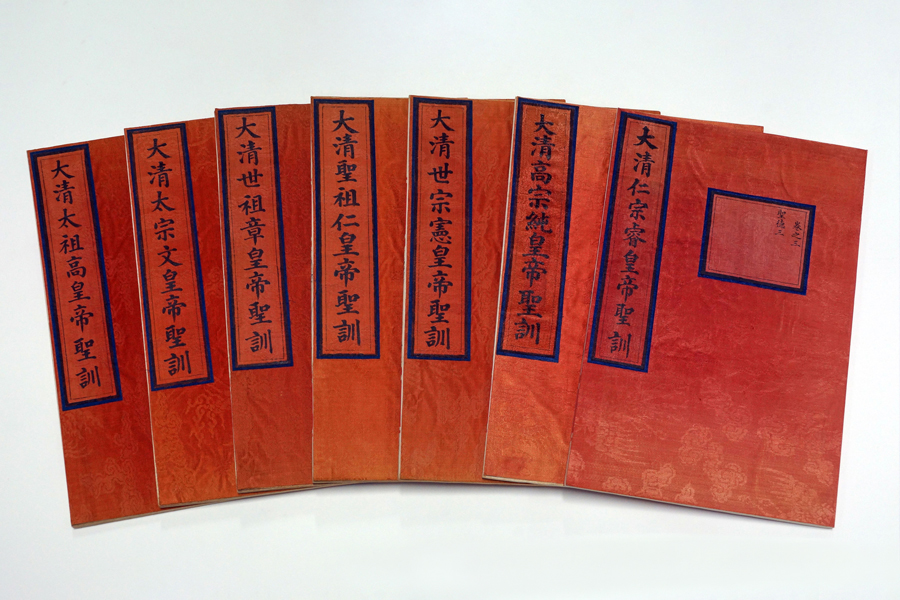Official historiographies are books compiled and published under the supervision of important ministers, often Grand Academicians or Grand Councilors, in historiography institutes set up at the order of the emperor. The actual writers were generally members of the Hanlin Academy or the Grand Council. During the Qing dynasty, a variety of agencies were set up by the emperors to compile and edit historiographical works: for example, the Veritable Records Office (Shilu guan) for compiling imperial annals, the Imperial Diary Office (Qijuzhu guan) for recording the emperor's daily life and official activities, the State Historiography Institute (Guoshi guan) for assembling and editing the national history, the Office of Collected Statutes (Huidian guan) and the Office of Institutional History (Santong guan) for compiling and revising official statutes, laws and regulations, the Office of Military Archives (Fanglue guan) for collecting records of military affairs, and the Office of Imperial Decrees (Shengxun guan) for compiling teachings from previous emperors. The Wuying Palace was where the Imperial Printing Office was situated. The typefaces used in the books it released are neat and orderly, the paper carefully selected, and the bindings and decorative elements elegant.
Qingdai Shilu (Veritable Records of Successive Reigns of the Qing Dynasty)
(Shilu) is succeeded new emperor set up veritable records office (Shilu guan) to record what achievements the Ex-emperor did. It's a chronicle official book which responded by the Grand Secretariat (Neige) ministers. They translated into Chinese, Man and Mongolian three kinds of text after the final. It's formed into 3 kind of bindings – small yellow damask version, small red damask version and great red damask version. The yellow damask version is a writing copy. It will be set into the great and small damask version after approval by the emperor. The great damask version was reserved in Emperor History library and Fengtian imperial palace. The small damask version was reserved in Qianqing Palace and Cabinet's memoir warehouse.
Qingdai Lichao Qijuzhu Ce (Imperial Diaries of Successive Reigns of the Qing Dynasty)
- Yellow silk-bound definitive edition
(Imperial Diaries) is an official historiography which main recorded emperor's words and deeds. It's a historical material of diary genre. Imperial Diary official of Qing Dynasty was founded in Kangzi early years. Imperial Diary official of Hanlin Academy must record directly per day about emperor meet officials, visit school to have speech, visit ancestral tomb, patrolling, suburban temple, foreigner doing the pilgrimage and suspect the prisoner… and so on. The record made a book per month and translated into 2 versions – Chinese and Man. It's an important official historiography to understand what emperor's official business events.
Benji (Biograghy of the Great Qing Emperor)
Sima Quan of Western Han Dynasty used historiography system - annals, aristocratic family, blog, biography and table to write the book - the Grand Historian (Shiji) and it became an example to edit official history in successive dynasties. Annals is a historical records which briefly recorded by chronicle about the great life of the emperor. Qing Dynasty inherited the tradition of Chinese history to set up State Historiography Institute (Guoshi guan) under Hanlin Academy. It responds to assemble and edit the national history. Each emperor has a system. It will be an act standard for succeeded descendants to follow.
Daqing Huidian (Collected Statutes of the Great Qing)
- Compiled on imperial order by Yunlu, et al., Qing dynasty
- Wuying Palace edition, 10th year of the Yongzheng reign (1732), Qing dynasty
(Collected Statues) is a monograph of laws and institutions which was set up an office to edit it officially to be an accordance when government agencies and officials were working. Qing Dynasty Kangxi, YongZheng, Qianlong, Jiaqing and Guangxu, each dynasty set up the Office of collected Statues (Huidian guan). It responds to compile or reassess laws and regulations and became 5 parts of Qing Dynasty Collected Statues. With the history developing, the provisions became more complicated. Except (Collected Statues), (Examples of Collected Statues) and (Figure of Collected Statues) were finished one after another during dynasty of Qianlong and Jiaqing. (Collected Statues) is main recorded current decrees and regulations. (Example) is recorded the historical development back ground of the decrees and regulations. (Figure) is combined figures and explanation to describe the appearance of laws and regulations in Qing Dynasty. (Collected Statues), (Example) and (Figure) are supported each other. It's a complete monograph of laws and institutions in Qing Dynasty.
Continued Three Links & Qing Dynasty Three Links
Since Tang Dynasty Du You edited the General Statute (Tong-Dian). Song Dynasty Zheng Qiao edited the General Annal (Tong-Zhi) and until to the Yuan Dynasty Ma Duan-lin edited the Literature General Check (Wen Xian Tong Kao) are named "Three Links". It's important political books which contents system of decrees and regulations in each dynasties. Qing Dynasty Emperor – Qianlong thought that the "Thee Links" had been edited for long time ago and placed order to set up the office of Institutional History (Santong guan), refer the style sheet of Three Links to edit "Continued Three Links". It recorded until end of Ming Dynasty. But "Dynasty Three Links" was also edited, main contents are about political system of Qing Dynasty. It became an important official classic to modern people understand decrees and regulations of political system in Qing Dynasty.
Military Archives of Qing Dynasty
Military Archives (Fanglue), also named Brief (Jilue), is a historical books, Qing Dynasty government set up a historical office, used form of records of major events, Major military activities as a target, to sort and edit the war compiled in a thematic form. It started from Kangxi years to edit Military Archives (Fanglue), the dynasties continue to work on it. So far, it had saved a large number of historical materials of military war and offered us a historical trajectory to understand Qing Dynasty military operations, ethnic relations and social turmoil.
Imperial Decrees of Qing Dynasty
- Daqing Lichao Huangdi Shengxun (Imperial Edicts of Successive Emperors of the Great Qing)
- Court manuscripts written in red-lined columns, Qing dynasty
Imperial Decrees are compiling teachings from previous emperors and edited it as a book to let future generations abide the ancestral decrees. The decrees of Qing Dynasties have ten dynasties made by Manchu language vision from the first founder of dynasty (Taizu) to Muzong and eleven dynasties made by Chinese vision since Taizu to Dezong. The contents covered the policy views and instructions of the emperors of the Qing Dynasty on politics, personnel, military, economic, diplomatic relations, culture and relief aid and so on.
